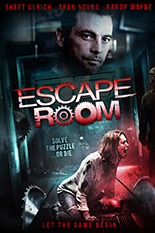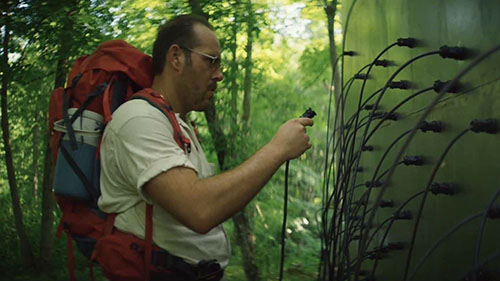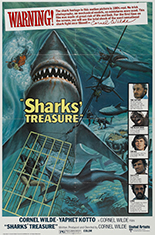
 Setting a horror film inside an escape-room attraction is such a good idea, multiple movies have done it, including the 2019 theatrical hit Escape Room. Generically enough, two films from 2017 are simply titled Escape Room, too.
Setting a horror film inside an escape-room attraction is such a good idea, multiple movies have done it, including the 2019 theatrical hit Escape Room. Generically enough, two films from 2017 are simply titled Escape Room, too.
This is one of those — the one starring former Scream king Skeet Ulrich.
As Brice, Ulrich is the owner of the escape room Deranged, the logo of which adorns his ever-present black hoodie. With attendance having significantly cooled since the previous Halloween, Brice is desperate to get Deranged some new buzz to bring in the kids. Instead of offering free beer, booking a band, incorporating strippers or pursuing any valid idea, he goes browsing for antiques. At his first stop, he immediately gets worked up over a skull box behind the counter, but the shop owner (Sean Young, 1984’s Dune) says it’s not for sale, because it’s one of the world’s most cursed objects, what with housing a demon and all.
One stolen skull box later, Deranged welcomes new customers in Cutout Bin Brad Pitt (Randy Wayne, Hellraiser: Judgment) and Junior Varsity Danny Masterson (Matt McVay, TV’s Lovecraft Country) as a pair of total horror bros. The boys have brought their less-enthused girlfriends (Hometown Killer’s Ashley Gallegos and Animal Among Us’ Christine Donlon) who, in real life, would not only be attending Wine Wednesdays, but would be with other guys.
As they try to uncover clues to unlock the door within 60 minutes, Brice watches from the comfort of his office, pumping his fists whenever they jump in response to a chintzy scare effect, as if to say, “Crushing it, dude!” Chained to the wall of the escape room is a sack-headed employee our foursome christens with the franchise-ready name “Stitchface” (Taylor Piedmonte, Mimesis). Unbeknownst to them, Stitchface has been possessed by the demon from the skull box; this only becomes apparent when he starts stabbing them to death while they attempt to solve puzzles. As Billy Joel put it, one-two-three-four-PRESH-SHURE!
How’s that for a premise? If you answered “about two levels beyond what I’m willing to believe,” you clearly stole my notes. For his first feature, writer/director Peter Dukes demonstrates skill in keeping the disposable cast’s hourlong challenge to more or less just that. Dukes’ decision may be strategic to stretch the running time, as the ridiculously needless Middle East prologue certainly suggests. Either way, that doesn’t make the movie interesting; watching the customers think aloud in real time about shapes and colors amounts to a taxing sit. The effect is like watching someone play a video game, in that at least someone appears to be having fun — it just isn’t you. —Rod Lott











